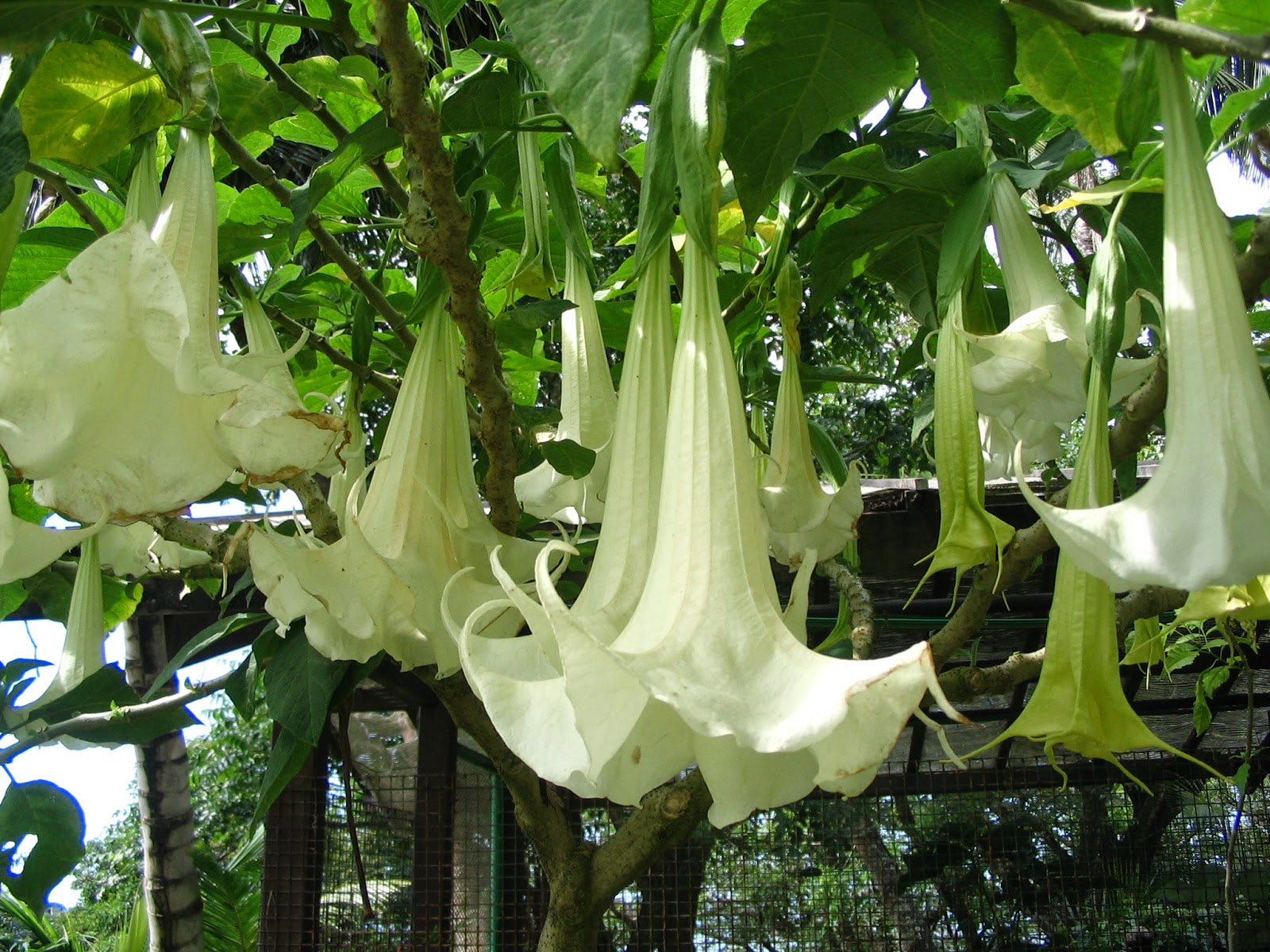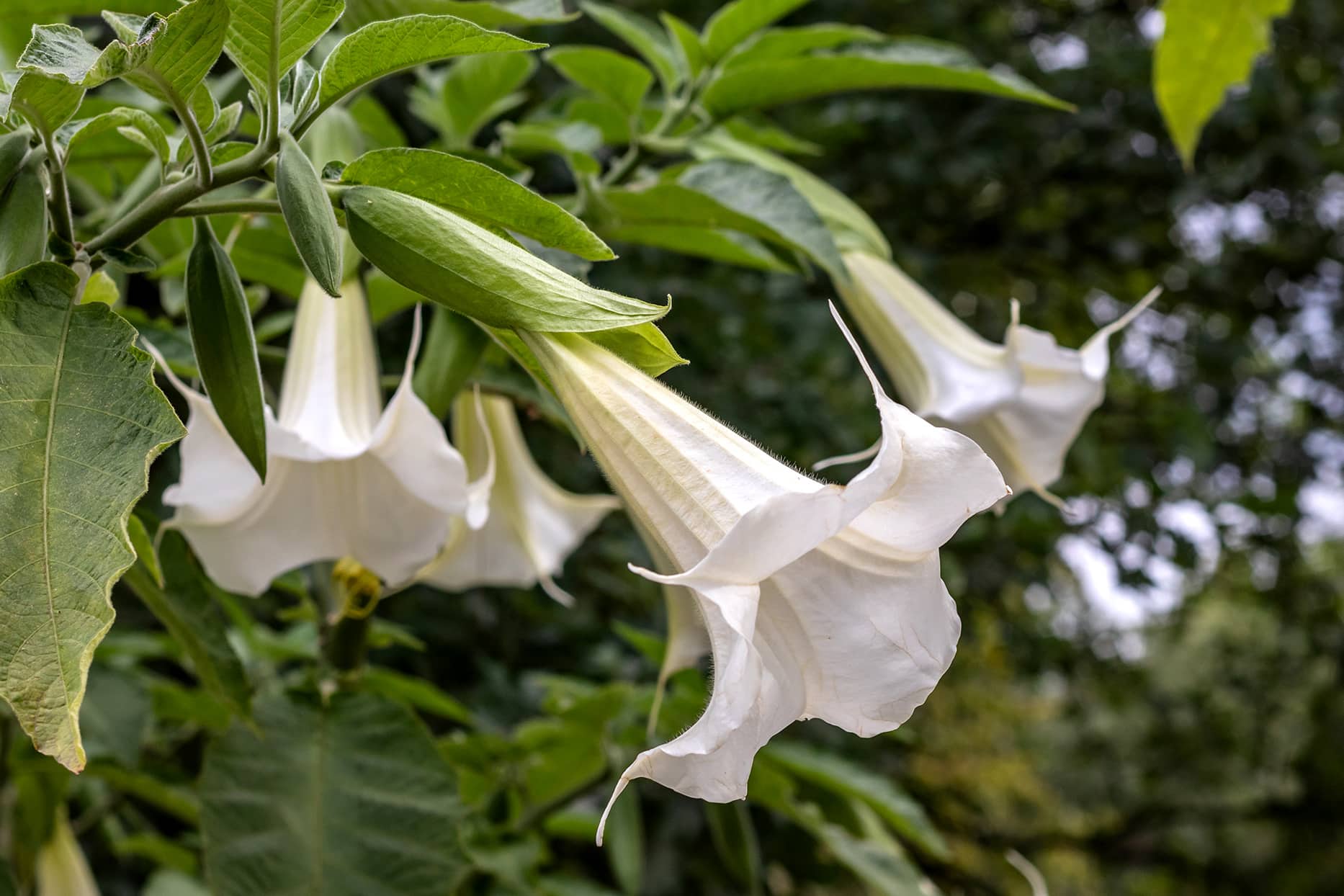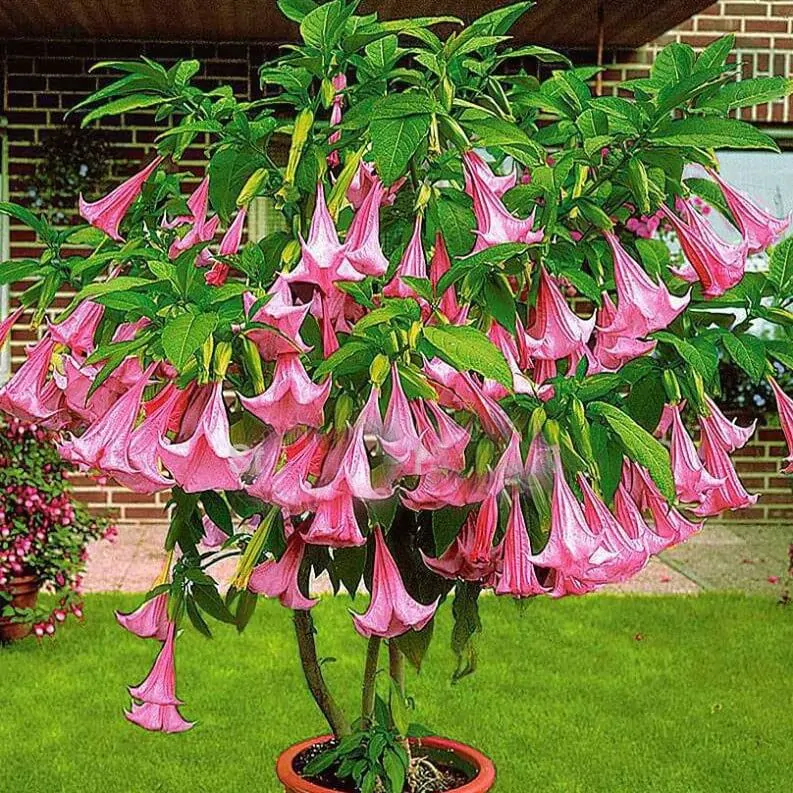Angel’s Trumpet (Brugmansia): A Clear, Caring Guide to Safe Beauty and Growth

There’s something truly magical about Angel’s Trumpet—Brugmansia—that draws you in before you even realize it. Those giant, pendulous trumpets hanging like lanterns from a tree, exuding a scent that seems to float on the evening air… it almost feels like the plant is inviting you into a secret garden. But mastering this tropical beauty requires more than admiration; it demands respect and learning from experience.

I remember my first encounter with Brugmansia back in 2010—a scraggly little cutting I brought home without knowing its incredible potential or the caution it requires. Over the years, I’ve learned how to nurture these plants through successes and setbacks alike, and now I want to walk you through everything I’ve gathered—the good, the tricky, and the delightfully rewarding—to help you master Angel’s Trumpet step by step.
Here's where 1. Foundations: Getting to Know Your Angel’s Trumpet Intimately
Before planting or pruning, understanding what makes Brugmansia so special is key. This is where your journey begins—not just knowing what it is but why it behaves as it does.
What Is Brugmansia? More Than Just A Flower
Native to the Andes Mountains region of South America, Brugmansias are woody shrubs or small trees—not just decorative plants but living sculptures that can reach anywhere from 6 up to 20 feet tall depending on variety. Unlike their cousins Datura (which hold their flowers upright), Brugmansias display these dramatic, downward-facing trumpet-shaped flowers that can grow up to a foot and a half long—with colors spanning creamy whites, vivid yellows, soft peaches, and delicate pinks.
What really caught me off guard in my early days was their fragrance—a perfume released mostly during twilight hours which fills the air like nature’s own symphony.
A Personal Note: One evening while watering my first mature plant at dusk, I remember suddenly feeling enveloped by this intoxicating vanilla-like scent mingled with jasmine hints—a sensory moment that hooked me for life.
The Double-Edged Sword: Toxicity You Must Never Ignore
Here’s an important truth I wish someone had emphasized when I began—every part of this plant contains toxic alkaloids (scopolamine and atropine). That means leaves, stems, flowers—even dried bits—can be dangerous if ingested by humans or pets. Early on, I accidentally touched some sap without gloves and felt mild skin irritation, which taught me instantly never to treat this plant casually.
Rule #1: Always wear gloves when handling—even pruning or deadheading—and wash your hands thoroughly afterward. Keep Brugmansia out of reach if children or curious pets roam nearby. Safety isn’t just advice; it’s a must-have mindset for loving these plants responsibly.
2. Your Step-by-Step Mastery Map To Growing Angel’s Trumpet Successfully
If all this sounds overwhelming right now—breathe easy! Let me break down exactly what worked best for me from seedling days to confident gardening:
Step 1: Start Simple — Use Cuttings For Quicker Results
While seeds are an option for patient growers seeking genetic variety, beginners often get frustrated waiting months for germination with uncertain outcomes. Instead, select semi-hardwood cuttings from healthy parent plants (ideally 8–12 inches long).
From personal trial-and-error: dipping cut ends in rooting hormone powder (available cheaply online) before planting under a humidity dome or clear plastic bag dramatically improved rooting rates—from a discouraging 30% success initially to over 75% in later attempts.
Step 2: Pick That Perfect Spot — Full Sun With A Gentle Shade Hug
Brugmansias love brightness but also appreciate afternoon shade especially if you live somewhere hot. If you’re in USDA zones 9–11 (think coastal California or Florida), planting directly outdoors works well; colder areas require container growing so plants can be moved inside during frost season.
Soil must drain well—nothing soggier than sitting roots drowned in water! Mix compost liberally into garden beds until soil feels rich yet crumbly under fingernails.
Step 3: Soil Preparation — Feeding The Root System Right
My method? Blend equal parts loam soil + aged compost + coconut coir (for moisture retention). pH between 6 and 7 is ideal—you can test cheaply with home kits from garden centers.
Adding mulch around the base helps retain moisture during dry spells while keeping weeds at bay; plus it gives you those satisfying earthy aromas every time you tend your plants.

Step 4: Watering — Learn To Read Your Plant's Thirst
Angel’s Trumpet likes steady moisture without drowning roots—a tricky balance when summer heat kicks in hard. Here’s how I keep that balance:
- Push finger into soil about an inch deep daily
- If dry at top inch but still damp below → wait before watering
- If completely dry beyond two inches → water deeply once
- During cooler periods reduce frequency but never let root ball dry completely out
Water early morning if possible so leaves dry before nightfall—minimizes fungal risk too!
Step 5: Feeding Strategy — Timing Is Everything For Gorgeous Blooms
Early growth demands nitrogen-rich fertilizer promoting lush leaf development—I used a balanced liquid fertilizer diluted every two weeks spring through summer. As soon as flower buds form (usually late spring), switch to phosphorus-heavy formulas commonly branded as “bloom boosters.”
This phased feeding made all the difference; my second-year plants flowered so profusely neighbors asked how many greenhouses I owned!
3. Common Bumps Along The Road And How To Navigate Them Like A Pro
Every gardener faces hiccups—the question is whether they stop us or teach us better techniques:
Mistake #1 – Overwatering = Root Rot Nightmare
I remember when my first potted Brug died prematurely because I was eager watering every day after bringing it home indoors wintertime—roots suffocated by soggy soil overnight! Solution? Use pots with drainage holes elevated slightly off surfaces using pot feet or bricks so excess water escapes freely.
Mistake #2 – Frost Damage Sneak Attack
One early spring where temps unexpectedly plummeted below freezing caught one of my big outdoor specimens unprepared—the leaves wilted yellow overnight like sad paper lanterns deflated too soon! Lesson learned: Move pots inside or wrap shrubs securely using horticultural fleece once nights forecast below mid-30°F regularly until safe temperatures last again.
Mistake #3 – Neglecting Pruning Means Drab Bushes
Pruning sounded intimidating at first—what if I accidentally hacked off next year’s flowers? But reading up finally revealed timing matters most; trim after flowering cycle ends to remove dead wood/shape airy frameworks allowing sunlight penetration plus airflow preventing mildew buildup overall improving bloom count next season substantially!
Mistake #4 – Handling Without Protection
Sap irritation isn’t severe but uncomfortable enough—you don’t want itchy hands distracting from joy gardening brings! Gloves are inexpensive insurance against frustration plus possible allergic reactions unknown at first contact stages especially among kids learning plant care basics.
4. Level Up Your Game: Advanced Care Techniques That Pay Off Beautifully
When comfort sets in mastering basics—it’s time for some tricks that will truly make your Angel’s Trumpets steal the scene:
Propagation Mastery
Air layering branches works wonders when patience isn’t plenty but desire for new plants high—it involves wounding bark lightly then wrapping moist sphagnum moss secured with plastic wrap until roots develop while branch stays attached providing nutrients simultaneously (can take few weeks).
Or semi-ripe stem cuttings dipped in commercial rooting hormone planted under mist systems/humidity domes spike success rate impressively compared to just plain attempts outdoors exposed fully without humidity regulation (been there!).
Optimizing Blooms
- Incorporate bloom booster fertilizers twice monthly during bud formation phases
- Slightly decrease watering right before buds emerge triggering mild drought stress signaling plant survival mode → produce more flowers naturally
- Supplemental grow lights trick shorter daylight periods fueling extended flowering indoors throughout winter months
Imagine evenings filled with dozens of fragrant trumpets glowing softly under porch lights—it transforms any space into enchanted oasis effortlessly!
Eco-Friendly Pest Management
Despite best care aphids/spider mites sometimes show face—they hate beneficial insects like ladybugs though! Introduce those early rather than spraying harsh insecticides which destroy helpful predators too quickly causing rebound infestations instead of quick fixes.
Regular neem oil sprays act as gentle deterrents keeping pests away without poisoning environment around your sanctuary either!

5. Tools & Resources That Make Gardening Feel Like Second Nature
Over years I've compiled essentials making every caretaking session feel enjoyable not chore-like:
| Tool | Purpose | Why It Matters |
|---|---|---|
| Sharp Pruners | Clean trimming cuts | Prevents tissue damage & disease entry |
| Moisture Meter | Measures actual soil dampness | Avoids guesswork preventing overwatering |
| Rooting Hormone | Encourages cutting root growth | Boosts propagation success dramatically |
| Neem Oil Spray | Organic pest control | Safe alternative protecting beneficial bugs |
Books & Online Communities:
- Tropical Flower Gardening by Peter Hessayon was one of my earliest favorites offering clear tropical insights.
- Join forums like GardenWeb or Facebook groups dedicated specifically to exotic tropical ornamentals—you’ll find other passionate gardeners sharing tips plus troubleshooting real-time situations much faster than textbooks alone!
6. Real-Life Success Stories From Fellow Gardeners Who Took The Leap
Nothing inspires growth more than hearing others’ journeys because they remind us effort pays off varied ways:
Sarah, who lives in Chicago winters on her balcony started tiny dwarf cultivars growing them exclusively in containers with supplemental lamps transforming her tiny urban apartment balcony into an alluring aromatic retreat adored by friends visiting weekends late spring onward.
A community garden near Austin planted multiple varieties turning shared spaces alive attracting hummingbirds along with butterflies demonstrating ecological roles even suburbs benefit from such tropical flair enhancing biodiversity visibly plus audibly through bird songs amid blooms!
And then there was John, who failed miserably germinating seeds several times till he switched gears toward hardwood cuttings combined with rooting hormone application achieving robust saplings within single growing season illustrating perseverance beats impatience indeed!
7. Troubleshooting Made Simple — Quick Solutions When The Unexpected Happens
Even expert mentors get thrown curveballs occasionally—but here are fixes proven through countless seasons caring for these beauties:
| Problem | Likely Cause | Practical Fix |
|---|---|---|
| Leaves Turning Yellow | Overwatering/nutrient imbalance | Evaluate watering schedule/fertilizer type & amount |
| No Flowers Despite Healthy Growth | Excess nitrogen/shade | Reduce nitrogen feed/increase light exposure |
| Wilting On Hot Days | Insufficient watering | Water deeply early mornings maintain consistent moist |
| Aphid Infestation | Pest presence | Spray neem oil regularly/introduce ladybugs |
Patience combined with attentive observation turns most issues temporary hurdles into learning opportunities that strengthen both your knowledge bank and your emotional resilience as gardener-extraordinaire!
8. Your Action Plan To Grow Gorgeous Angel's Trumpets Starting Today!
Ready? Here’s your simple blueprint distilled from years nurturing these wonder-plants:
- Decide start method: prefer cuttings over seed unless adventurous!
- Prepare rich well-draining soil enriched with organic compost/mulch.
- Choose sunny spot protected against frost risks.
- Maintain steady moisture levels avoiding extremes.
- Adjust feeding regime per growth stage switching nutrition emphasis accordingly.
- Prune post-bloom maintaining open airy shape encouraging airflow.
- Handle always wearing protective gloves avoiding direct sap contact.
- Scout regularly pest/disease signs acting swiftly using natural controls.
9.(Advanced) Experiment air layering propagation next season once comfortable basics mastered.
Celebrate incremental wins! Watching angelic trumpets unfurl—and sensing their fragrance drifting on balmy breezes—is proof positive your efforts yielded remarkable results worthy of pride every single time .
Looking Ahead: Long-Term Growth And Joy With Angel's Trumpet
True mastery blossoms over seasons filled with curiosity paired alongside steady practice—not just following recipes blindly but adapting lovingly according to each plant’s subtle cues unique microclimate conditions surrounding them personally relatable moments cause us all gardeners remember why we started loving our craft deeply anyway…
Try new cultivars exploring colors/textures broadening horizons creatively whilst volunteering getting hands dirty amongst experts gaining seasonal wisdom firsthand … Share stories via blogs/podcasts helping fellow beginners avoid pitfalls forming vibrant supportive networks making community stronger globally…
Angel's Trumpet rewards patience generously both visually—for its dramatic floral displays—and atmospherically—for scent-filled evenings woven quietly yet powerfully within our daily lives reminding us nature's artistry thrives hand-in-hand alongside human care...
You’re ready not just technically—but emotionally—to nurture these majestic blooms confidently now because you've walked through every step together—I’m cheering quietly here as you bring magical trumpets alive under starlit skies nourished entirely by YOUR hands.
Happy gardening adventures ahead 🌿🎺✨



